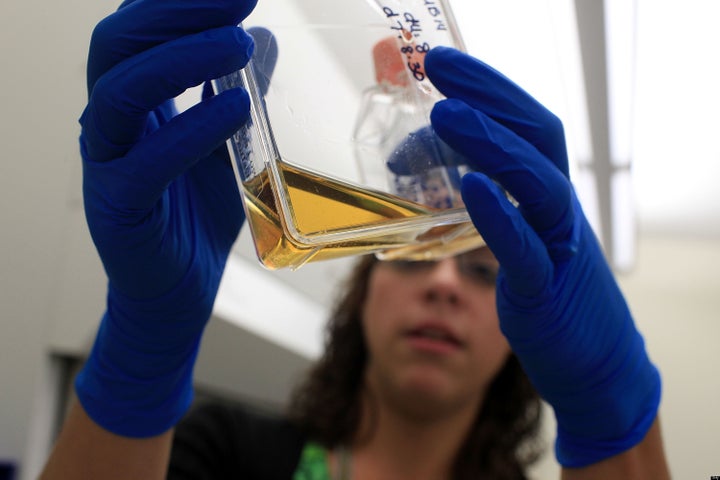
There is a bit of conventional wisdom that says the average person or family spends more time planning a two-week vacation than developing priorities for the next 20 years of their life.
The expression rings true to me. Over my nearly 20 years of teaching, I have met with innumerable students seeking advice about career development. Almost invariably, they have tended to be far more focused on what degree to get, or which graduate school to attend, than on how they would want to apply what they learn, and what differences they want to make in the world. I guess it's just human, and perhaps adaptive, to tend to look where we are putting our feet, rather than at the horizon.
But there is a potential personal cost to this prevailing nearsightedness. Imagine planning a vacation around what road you will turn on next, rather than where you actually want to go. The route is just the means -- the destination is the end. Looking at our feet may be the right way to get there without tripping, but it's a bad way to decide where 'there' is.
This myopia (nearsightedness) does not seem to be limited to individuals. I am convinced it afflicts institutions as well -- perhaps most, or even all. But my particular concern is the institutions -- premier among them the National Institutes of Health -- that fund biomedical research. August though the NIH may be, I believe it is potentially ... myopic.
The NIH website indicates that over $30 billion are disbursed annually, with roughly 80 percent going to 325,000 researchers at over 3,000 institutions. Another 10 percent goes to fund the research of 6,000 or so scientists at NIH's own labs. More details are provided, as is an overview of the budget allocations each year since 1938.
But sending out funds to support specific research projects is, of course, the means, not the ends; the route, not the destination. The destination is measurably and meaningfully promoting the public health, and advancing the human condition.
To the best of my knowledge, and that of the expert colleagues with whom I have conferred, there has never been a systematic analysis of what allocation of biomedical research dollars would most advance the human condition between now and any given time horizon. The closest may have been an effort by Nobel Laureate Harold Varmus, when the NIH Director, to examine the correlation between the flow of NIH dollars, and the burden of particular diseases.
But as a Preventive Medicine specialist, I am not convinced that a dollars-follow-disease model offers the greatest promise. We have some pretty clear indications of how we might use research dollars to pre-empt disease instead.
Among the most vivid of these indications are the results of the $174 million Diabetes Prevention Program (DPP), funded by the National Institute for Diabetes, Digestive, and Kidney Diseases (NIDDK). This seminal clinical trial randomly assigned roughly 3,500 adults on the brink of diabetes to one of three treatments: usual care, the drug metformin (Glucophage), or a lifestyle intervention comprised of a prudent, healthful diet and moderate exercise.
Dramatic results led to early termination of the trial at about the four-year mark. Metformin, a very effective drug, reduced the incidence of diabetes by 30 percent -- meaning nearly one in three high-risk people that would have developed diabetes without the drug, did not. The lifestyle intervention, however, was twice as good, reducing the incidence of diabetes by 58 percent!
Good news so far, but then came the bad. Nobody really knew how to take a lifestyle intervention so dramatically effective in the context of a well-controlled, costly, clinical trial- and make it work in the real world. No one could make it play in Peoria!
This problem was clear enough that the NIDDK convened a series of national conferences dedicated to the issue of translating the DPP benefits into real-world settings. It has, as well, devoted funding to such so-called translational research efforts ever since. But that funding amounts, roughly, to a rounding error in the overall NIH budget. The CDC devotes more of its research budget to this issue, but its research budget is considerably smaller.
The DPP exemplifies a well-established theme in the research literature, spanning 20 years at least. Were we effectively to apply at the population level what we already know about just three behaviors -- tobacco use, dietary pattern, and physical activity -- we could eliminate up to 90 percent of diabetes, and 80 percent of chronic disease overall. We could, in other words, not just measurably and meaningfully advance the human condition, but stunningly do so -- adding both years to life, and life to years.
As things stand, the trends are very much in the opposite direction. The CDC projects that by the middle of this century, as many as one in three Americans will have diabetes! Leaving aside the human costs of this, it's hard to fathom how the nation can bear the economic costs and remain financially viable, let alone vital.
A very simple-minded formula might be considered. More than 70 percent of the total burden of ill health and early death in the U.S. is from chronic diseases, and 80 percent of this burden could be eliminated with effective strategies to turn knowledge into power, what we already know into what we do. So perhaps (70 percent X 80 percent), or 56 percent of the NIH budget, should be devoted to this issue? That would still leave nearly half the NIH budget for 30 percent of the overall health burden.
Better than this would be a truly sophisticated analysis of the best emphasis for the allocation of health research dollars. Along with colleagues who include luminaries in health research, computer modeling, and health economics, we have developed such a project, called EMPHASIS: economic modeling for public health to accelerate salutary impacts. The project, which could be conducted for less than $1 million (0.003 percent of the annual NIH budget), would indicate the return on investment measured in quality of life for alternative allocations of funds. The project is as yet unfunded -- we're working on that.
The luminous promise of lifestyle to public health -- the stunning potential to enhance the human condition through better use of feet (physical activity), forks (dietary pattern), and fingers (tobacco use) -- is clearly the rich, ripe and low-hanging fruit in the orchard of biomedical advance. Even as we explore the molecular genetics of future crops, perhaps we might consider doing whatever it takes to fashion the step ladder that will let us reach and harvest the bounty in plain sight, and just barely out of reach.
Dr. David L. Katz; www.davidkatzmd.com
www.turnthetidefoundation.org
